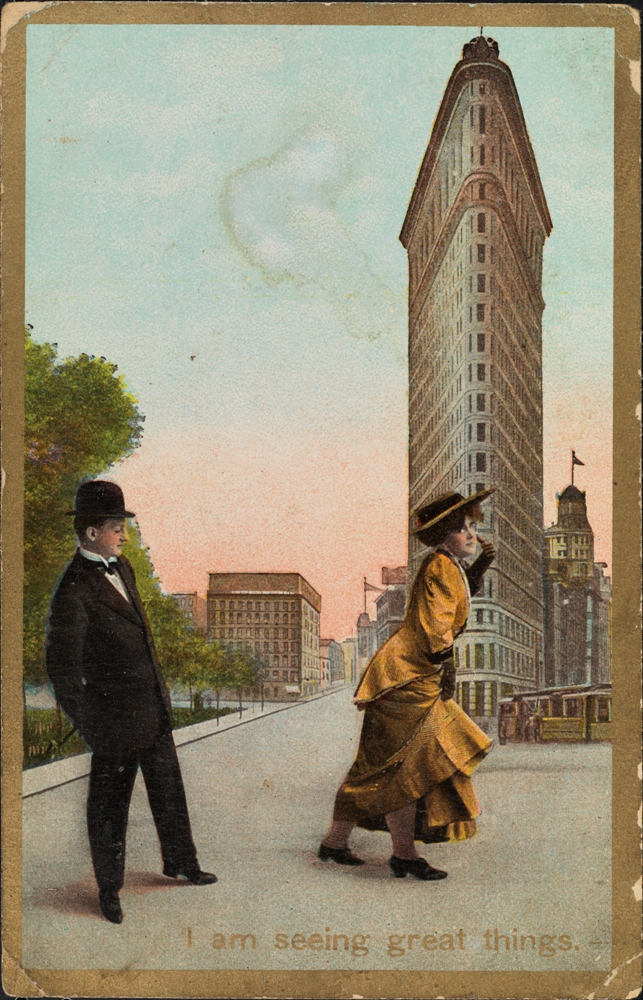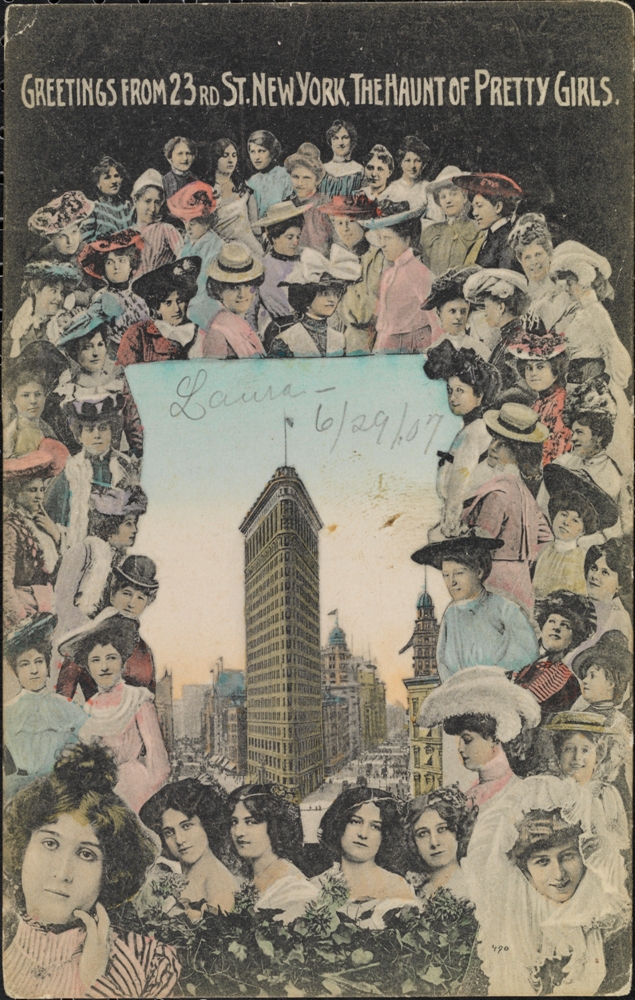23 Skidoo
Tuesday, September 6, 2011 by
Today crowds gather around the Flatiron Building to admire its architecture and place in New York history, but back in the early part of the 20th century, men gathered there for a vastly different reason. As many New Yorkers know, the Flatiron sits at the intersection of Broadway and Fifth Avenue, directly across from Madison Park; the layout of the streets and the park, combined with the building’s placement, can create gusts of wind strong enough to lift women’s skirts.
Back in an era when showing any part of one’s legs was risqué, men would gather on 23rd Street hoping to catch a glimpse of a woman’s ankle or maybe even a little more. A contemporary viewer may not conclude that the man in the postcard to the left is admiring the woman’s ankle; I initially thought he was looking at her posterior, but a fellow cataloger clued me in.
While it isn’t used heavily today, some say the phrase “23 skidoo” came from this phenomenon. Popular in the early part of the 20th century, getting the “23 skidoo” refers to either leaving an area quickly or being forced to leave. Apparently, the effect of the wind at this intersection was well known and crowds of men would gather in hopes of seeing some skin. As Andrew S. Dolkart in his online article Birth of the Skyscraper: Romantic Symbols describes, so many men loitered in this area that police would eventually come to 23rd Street to usher the crowd away:
In the early twentieth century, men would hang out on the corner here on Twenty-third Street and watch the wind blowing women’s dresses up so that they could catch a little bit of ankle. This entered into popular culture and there are hundreds of postcards and illustrations of women with their dresses blowing up in front of the Flatiron Building.
Some of the hundreds of postcards and illustrations Dolkart refers to are held within the Museum’s collection. The coy women in the postcard to the right also allude to the Flatiron’s effect and the crowds that gathered there. Though the postcard suggests they welcome the attention, I wonder how many women walking on 23rd Street truly wanted to send their well wishes.



